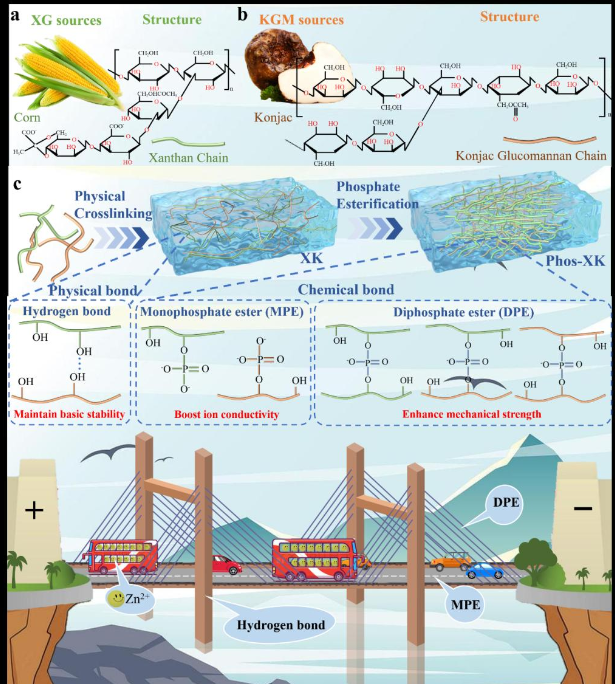Recently, the research team led by Professors Gou Lei and Fan Xiaoyong from our research team achieved a significant breakthrough in the field of flexible energy storage. Their research findings, titled "From Physical Cross-Linking to Tailored Phosphorylation: Unlocking High-Performance and Biocompatible Xanthan-Konjac Hydrogels for Zinc-Ion Batteries" have been published online in Advanced Materials (IF 27.4), a leading journal in materials science. Professor Gou Lei served as the first author and corresponding author, while Professor Fan Xiaoyong of our university and Lecturer Wang Siyao of Xi’an Medical University were co-corresponding authors. Chang’an University is the first corresponding affiliation.

The team developed a series of Phos-XK hydrogel electrolytes based on natural polysaccharides xanthan gum and konjac glucomannan. By combining physical cross-linking with precise phosphorylation modification, they addressed the core issues of insufficient mechanical strength and ionic conductivity in traditional natural polymer-based hydrogel electrolytes, providing an innovative solution for the green development of flexible aqueous zinc-ion batteries (FAZIBs). The material design philosophy incorporates concepts from "bridge engineering": physical cross-linking constructs a foundational hydrogel network akin to "bridge piers," providing a stable mechanical base for the entire hydrogel. Subsequently, a phosphorylation reaction is introduced to precisely regulate the ratio of monoesters to diesters. The diesters act like "high-strength cables," enhancing cross-linking and significantly improving the hydrogel's mechanical stability, while the monoesters function like "highways," accelerating zinc-ion transport. Consequently, the material Phos-XK-1 achieves an excellent balance between mechanical strength and ionic conductivity. The assembled flexible battery demonstrated stable performance under bending conditions and successfully powered an electronic watch when directly used as a flexible strap, validating its application potential in flexible wearable devices. Furthermore, cytotoxicity tests, biodegradation, and product analysis experiments confirmed that the material exhibits no significant cytotoxicity and can be completely degraded into glucuronic acid in microbial environments, offering a new solution for green flexible energy storage.

Paperlink:https://advanced.onlinelibrary.wiley.com/doi/10.1002/adma.202505132
